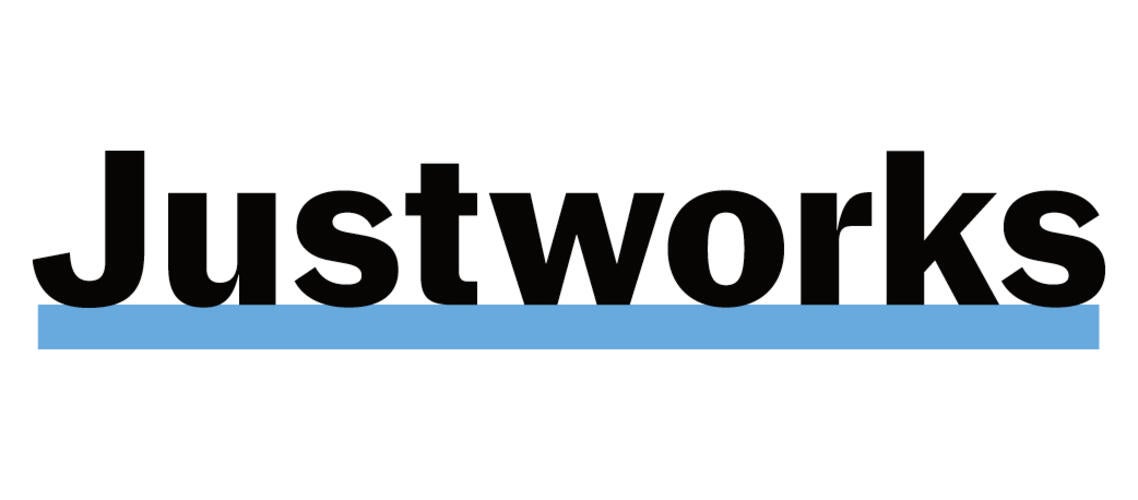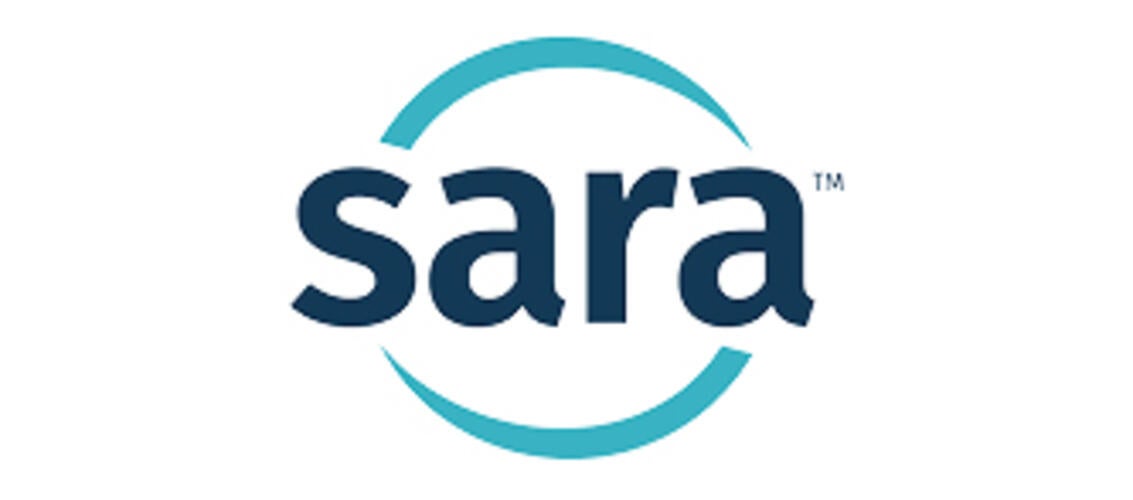Bylaws
BYLAWS OF THE NATIONAL ASSOCIATION OF STATE WORKFORCE AGENCIES
(Formed under the Virginia Non-stock Corporation Act)
Updated September 22, 2021
ARTICLE ONE
Mission
To enhance the state workforce agencies’ ability to accomplish their goals, statutory roles and responsibilities.
Vision
To be a leading national advocate for workforce development policy and catalyst for system advances.
Strategic Goals
Continue building NASWA's brand as a trusted advocate for America's workforce system.
- Work with member states and other stakeholders to create a national VISION for a future public workforce system (both workforce and UI programs)
- Recommend optimum uses of technology to support the vision for a future public workforce system (both workforce and UI programs)
- Advocate nationally on behalf of state policy and operational needs of the public workforce system
Provide best-in-class member services.
- NASWA is the go-to source for emerging best and promising workforce practices
- Expand and optimize knowledge gain and information sharing through conferences, meetings and networking opportunities for members
- Expand NASWA's world-class staff
Proactively manage NASWA's long-term fiscal sustainability.
- Consider possible actions and activities to maximize its capacity to achieve its mission
- Identify additional or increase current sources of funding
Guiding Principles
External
- Promote the publicly-funded workforce system and drive the national agenda on workforce development
- Lead coordination of local, state and federal officials who have responsibility for the success of the workforce system in meeting employer and job seeker needs;
- Further the understanding that the core function of the workforce system is to meet employers’ needs for a qualified workforce, to find employment for workers, and to help workers advance their careers; and
- Advance the states’ role in the workforce system.
Internal
- Provide superior value-added member services, including research, identification of promising practices, technical support, information technology initiatives, professional development and training; and
- Invest in the training and professional development of the workforce system’s staff, particularly those who deliver services to customers, including employers and job seekers.
ARTICLE TWO
Members and Meetings
Section 1 – Members.
Each state agency with principal responsibility for workforce programs, including state administrators of unemployment insurance laws, employment and training services, veterans and reemployment, labor exchange, employment statistics, and labor market information programs, and related programs and services made available through the publicly-funded state workforce systems shall be an eligible member of the Association.
Section 2 - Standing Membership Meetings.
There shall be two standing membership meetings annually, one at the Annual Conference and a second full membership meeting, which shall be generally held six months apart. Under special circumstances, the Board may determine if one or both of these meetings may be held virtually.
a. Annual Conference
The Annual Conference shall be held on a date to be approved by the Executive Committee for the election of officers and directors and other business.
b. Second Full Membership Meeting
A second full membership meeting shall be held in the Washington, D.C. area, or virtually, on a date to be specified by the Board of Directors.
Section 3 - Special Membership Meetings.
A special membership meeting may be called by a majority of the Board of Directors where a vote of the membership is required and the matter is urgent and cannot be delayed until the next regularly scheduled meeting. Special membership meetings may be in-person or by phone/web conference.
Section 4 - Notice of Regular and Special Membership Meetings.
Written notice of each meeting of the members shall be given by the Association and shall state the date, time and place of the meeting and the purpose or purposes for which the meeting is being called. Notice shall be given to each member not less than (10) calendar days before the date of any meeting.
Section 5 - Quorum.
One-half of the members entitled to vote, either represented in person or by proxy, shall constitute a quorum at a meeting of members for the transaction of any business. Once a member is present at a meeting, such member is deemed present for quorum purposes for the remainder of the meeting and for adjournment of that meeting.
Section 6 – Voting at Membership Meetings.
Each state shall be entitled to only one vote, as determined by the administrators of its agency(s) who qualify as regular members.
A majority vote of the member states casting ballots shall be required for the adoption of positions and the transaction of all other business affecting the Association.
In the event of a tie, the matter shall be put to a second vote after a period of additional discussion. In the event of a second tie, the matter shall be considered as not carried.
Voting may be in person (or virtually, if determined by the Board in Section 2) or by a written proxy signed by the member or such member's duly authorized attorney-in-fact. Written proxies must be received by the Secretary no less than two (2) hours prior to the start of the business session. If the Secretary is unable to attend, the Board shall select another individual to serve as Secretary for purposes of this section. Proxies shall be publicly reviewed prior to the start of the meeting. Oral proxies shall not be accepted. A proxy shall be valid for the business session for which it is received.
ARTICLE THREE
Board of Directors
Section 1 - Number, Classes, Election, and Terms.
The directors shall consist of a maximum of (5) Officer-Directors, who shall constitute the Executive Committee and the number of Regional Directors listed herein. The Chair, Chair-Elect, the most recent Past-Chair available to serve, Secretary, and Treasurer of the Corporation shall be the Officer-Directors, who shall serve as the Executive Committee. The Association’s President and Chief Executive Officer shall serve as a non-voting member of the Executive Committee and may be asked to leave the meeting in the case of an executive session.
As provided in the Articles of Incorporation, at each Annual Conference the members shall elect Regional Directors in the following manner: one Regional Director and one Alternate Regional Director shall be nominated and elected from among the state administrators from each of the following regions:
- Region I consisting of Maine, Massachusetts, New Hampshire, Puerto Rico, and Vermont.
- Region II consisting of Connecticut, New York, New Jersey, Rhode Island, and the Virgin Islands.
- Region III consisting of Delaware, Maryland, Pennsylvania, Virginia, West Virginia, and the District of Columbia.
- Region IV consisting of Alabama, Florida, Georgia, Kentucky, Mississippi, North Carolina, South Carolina, and Tennessee.
- Region V consisting of Illinois, Indiana, Minnesota, Michigan, Ohio, and Wisconsin.
- Region VI consisting of Arkansas, Louisiana, New Mexico, Oklahoma, and Texas.
- Region VII consisting of Iowa, Kansas, Missouri, and Nebraska.
- Region VIII consisting of Colorado, Montana, North Dakota, South Dakota, Utah, and Wyoming.
- Region IX consisting of Arizona, California, Hawaii, Nevada, and Guam.
- Region X consisting of Alaska, Idaho, Oregon, and Washington.
Each Regional Director shall be elected for a one-year term until the next Annual Conference or until their successor has been elected. Each region shall also elect an Alternate Regional Director who shall serve for one year until the next Annual Conference until their successor has been elected or as described in Section 4. There shall be no more than one voting Board member from any member state, nor shall any state have both a Regional Director and an Alternate Regional Director serving concurrently. The Regional Director shall keep all member agencies from their region informed about Board decisions and issues.
Section 2 - Powers and Duties.
All Association powers shall be exercised by, or under the authority of, and the business of the Association shall be managed under the direction of, the Board of Directors. In addition to the powers conferred upon the directors by statute or otherwise, the Board shall have all powers necessary to carry out the mission and business of the Association.
The Board shall determine the scope and direction of the Association’s programs annually and shall establish and charge committees to assist in carrying out these programs.
The Board shall designate and employ a President and Chief Executive Officer, and establish their responsibilities.
Section 3 - Meetings and Notices.
An annual meeting of the Board of Directors shall be held each year at the Annual Conference. Regular and special meetings of the Board of Directors shall be held at places and times determined by the Board, on the call of the Chair, or on the call of the majority of the members of the Board.
Notice of meetings shall be given to each director at least three (3) business days before each meeting. The notice shall contain the time and place of the meeting and shall specify the purpose or purposes for which the meeting is being called. Meetings may be validly held without such notice if all the directors are present or if those not present either waive notice or ratify the action taken at the meeting in writing within ten (10) business days following the meeting.
Section 4 - Resignation and Vacancies.
Any director may resign at any time by delivering written notice to the Board of Directors, the Chair, or the Secretary. Such resignation shall take effect when such notice is delivered unless the notice specifies a later effective date.
The term of any Regional Director or Alternate Regional Director shall end automatically at the time they cease to be employed by a member agency. In the event a Regional Director leaves the Board, for whatever reason, the Region’s Alternate Regional Director shall immediately replace the region's departed Regional Director and Board member, serving the balance of the unexpired term.
A vacancy in the Alternate Regional Director position shall be filled within thirty (30) calendar days or as soon as feasible by a vote of the members from the states in the affected region. Such vote may be taken by email ballot.
Section 5 - Quorum of Directors and Voting.
One-half of the directors entitled to vote, either represented in person or by proxy, shall constitute a quorum at a meeting of directors for the transaction of any business. Once a director is present at a meeting, such director is deemed present for quorum purposes for the remainder of the meeting and for adjournment of that meeting. In the event the Regional Director cannot attend, the Alternate Director shall become the region’s representative. In the event neither the Regional Director nor the Alternate Director can attend, the Regional Director may designate a proxy in writing, which proxy shall be another administrator from that region. The written proxy shall be signed by the Regional Director or their duly authorized attorney-in-fact. Written proxies must be received by the Secretary no less than two (2) hours prior to the start of the meeting. Proxies shall be publicly reviewed prior to the start of the meeting. Oral proxies shall not be accepted. A proxy shall be valid for the meeting for which it is received.
Only Directors, and in the absence of a Regional Director the corresponding Alternate Regional Director, or in their absence the Regional Director’s proxy shall be eligible to vote. In no event shall any member of the Board be entitled to more than one vote.
In the event of a tie, the matter shall be put to a second vote after a period of additional discussion. In the event of a second tie, the matter shall be considered as not carried.
Section 6 - Board of Directors Meetings by Conference Call or Virtually.
Regional Directors or Alternate Directors may participate in a regular or special meeting of the Board by means of conference telephone or similar communication equipment by means of which all persons participating in the meeting may simultaneously hear each other during the meeting. A person participating in a meeting by such means is deemed to be present in person at the meeting.
Section 7 - Compensation of Directors.
The Association shall not pay any compensation to directors for services rendered to the Association.
Section 8 – Indemnification for Directors.
The Association shall maintain directors and officers liability insurance (D&O), in appropriate amounts, as indemnification for losses or advancement of defense costs in the event an insured suffers such a loss as a result of a legal action brought for alleged wrongful acts in their capacity as directors or officers.
In addition, the Association may maintain additional liability coverage, including coverage for errors and omissions (E&O), as deemed appropriate by the Board of Directors.
ARTICLE FOUR
Officers
Section 1 - Election and Terms.
At the Annual Conference, the members shall elect a Chair-Elect, Secretary, and Treasurer. The Chair-Elect elected at the Annual Conference shall automatically become Chair upon the election of a Chair-Elect at the subsequent Annual Conference. The most recent Past-Chair available to serve shall also be an officer. Members in good standing may run for one position per election cycle.
The Chair, Chair-Elect, and Secretary shall serve for one (1) year, or until their successors are elected. The Treasurer shall serve for two (2) years, or until their successor is elected.
A majority of all votes cast shall be necessary for election of officers. If no candidate receives a majority, the two candidates receiving the largest number of votes will go on to a second ballot with another round of voting.
In the event there is a tie after the second round of voting between the two candidates, the matter shall be put to a third ballot. In the event of a second tie, the matter shall be determined by the toss of a coin to be conducted by the presiding officer.
Election shall be by written ballot for any office for which more than one candidate is nominated. The presiding officer shall appoint tellers to distribute, collect, and count the ballots.
Nominating speeches shall be limited to two (2) minutes by no more than two people per candidate. A seconding speech is not required, but a candidate may have one seconding speech limited to one (1) minute by no more than one person. Each candidate speech shall be limited to five (5) minutes as determined by the Secretary.
Section 2 - Powers and Duties.
The officers shall have such duties as generally pertain to their respective offices as well as such powers and duties as from time-to-time may be delegated to them by the Board.
The Chair, or in their absence the Chair-Elect, or another Board member designated by either for such purpose, shall preside at the meetings of the membership.
The Chair, or the Chair's designee, may present to any interested party the Association’s position, as determined by these Bylaws, on any issue.
In addition, the duties of the Chair shall include:
- presiding at the meetings of the Board of Directors or the membership;
- ensuring the ongoing business of the Association is carried out in a timely and effective manner:
- recommending to the Board the annual program and the committees necessary to carry out these programs;
- designating the chair of each committee; and
- review President and Chief Executive Officer performance annually and recommend salary increase to the Executive Committee.
The duties of the Chair-Elect shall include:
- presiding at meetings of the Board of Directors or the membership in the Chair's absence;
- designating vice chairs and technical chairs of committees; and
- performing other duties as may be assigned by the Chair, for the benefit of the Association.
The duties of the Secretary shall include:
- ensuring that proper notice is given for all meetings of the membership or the Executive Committee and for other matters of business as may be required by these By-Laws;
- validating that a quorum exists for meetings and for votes, in accordance with these By- Laws;
- ensuring accurate minutes of general meetings and executive sessions of the Board are provided to the membership in a timely manner following each meeting; and
- reviewing and approving proxy ballots prior to the Board and Membership meetings.
The duties of the Treasurer shall include:
- chairing the Audit and Finance Committee;
- reviewing the financial statements, investment performance and internal controls on a regular basis;
- reporting on the annual audit to the Board of Directors; and
- making recommendations to the Executive Committee on financial and investment related issues.
Section 3 - Resignations, Removal and Vacancies.
Any officer may resign at any time by delivering written notice to the Association. Unless the written notice specifies a later effective date, the resignation shall be effective when it is delivered.
The term of an officer shall end automatically at the time they cease to be employed by a member agency.
Any officer may be removed by the vote of a majority of directors for failure to perform the duties of their office, provided that such action is taken at a properly Noticed Board meeting with an established quorum.
In the case of a vacancy in the office of the Chair, the Chair-Elect shall automatically succeed to the Chair for the remainder of the term and shall serve for a full term as Chair thereafter. A vacancy in the office of the Chair-Elect shall be filled by election at the next meeting of the members.
A vacancy in the office of Secretary or Treasurer shall be filled by the Board until the next Annual Conference.
Section 4 - Compensation.
The Association shall not pay any compensation to officers for services rendered to the Association.
ARTICLE FIVE
Committees
Section 1 - Standing Committees.
There shall be the following standing committees of the Board:
- Executive Committee
The Executive Committee as defined in Article 3. The Executive Committee shall be empowered to take action on behalf of the Board.
- Legislative Committee
The Legislative Committee shall be comprised of the Executive Committee members with an option for the Chair of the Board of Directors to appoint two additional Regional Directors from different regions. The chair of the Committee shall be appointed by the Chair of the Board of Directors, and may be the Chair of the Board of Directors. If a Regional Director appointed by the Chair of the Board of Directors ceases to serve on the Board, his or her replacement on the Legislative Committee shall be appointed by the Chair of the Board of Directors. The Chair of the Board of Directors may also, at his or her discretion, invite some, or all, of the Chairs and Vice-chairs for Committees of the Membership to participate as ex-officio members of the Legislative Committee.
- Audit and Finance Committee
The Audit and Finance Committee shall be comprised of the Treasurer as Chair and two Regional Directors from different regions appointed by the Chair of the Board of Directors. The Committee shall meet, at a minimum, twice each year.
The Audit and Finance Committee shall:
- review and select the Auditor;
- review annual audits and provide oversight of corrective action plans that may result from audits, ensuring timely completion of those plan
- recommend an Investment Policy, which shall be approved by the Executive Committee, select an investment manager and review performance to plan; and
- advise the Executive Committee on significant financial issues for the Association.
Section 2 - Committees of the Membership.
The Board shall name such committees consistent with the guiding principles of the Association as may be required to advise or carry out the work of the Board. Committees shall be responsible for developing position papers, recommendations, or other work products as assigned by the Board or as raised by the committee, consistent with the mission, program, and priorities of the Association and of the Committee.
Committee members shall be nominated by their state administrators and confirmed by the Committee Chair. Committee members shall be reviewed by their state administrator every two (2) years and may serve unlimited terms. The number of committee members shall be determined by the Committee Chair, is not limited and may include multiple members from a state or member agency, where appropriate to the business of the committee.
Quorum shall follow the requirements of Article 2, Section 5 and voting shall follow the requirements of Article 2, Section 6.
Committee chairs and vice-chairs shall be appointed for one (1) year, with the vice-chair ascending to chair. It is preferable that the chair and vice-chair shall be administrators or deputy administrators of member agencies. Chairs may not serve successive terms as the chair without Board Chair approval.
In addition to the chair and vice-chair, each committee of the membership may have a technical vice-chair who shall be an individual from a member state who holds a non-politically appointed position in a member agency. Any technical vice-chair shall be appointed by the Board Chair-elect, upon recommendation from the committee chair, for a term of three (3) years, and may serve unlimited terms. The purpose of the technical vice-chair is to provide subject matter expertise and continuity.
The Board Chair shall fill vacancies occurring among committee chairs and the Board Chair-Elect shall fill vacancies occurring among vice-chairs and technical chairs.
ARTICLE SIX
Statements and Legislative Priorities on Behalf of the Association
Section 1 - Statements
The Executive Committee, in coordination with the Legislative Committee, shall approve statements of NASWA policy.
Section 2 – Creation and Adoption of the Legislative Priorities.
The Legislative Priorities shall be approved by the Legislative Committee, for adoption by the Board of Directors.
In the event that it becomes necessary to amend the Legislative Priorities at any time of the year, changes may be made in accordance with the provisions of these Bylaws for conducting the business of the Association.
Section 3 - Members Retain Right to Present Positions
Notwithstanding any provisions, each member agency shall retain the right to present its own position on any issue provided that it clearly represents such position as its own position and not the position of NASWA.
ARTICLE SEVEN
Membership Fees
An annual membership fee shall be fixed by the membership at a membership meeting. Any proposal to change the annual membership fee shall be presented to the members at least thirty (30) calendar days prior to a full membership meeting and voted upon at a membership meeting. Voting shall be in accordance with Article 2, Section 6.
Each state shall pay only one annual membership fee for members, whether they are from one, or more than one, agency.
If a state fails to remit the full amount of its annual membership fee within 90-days of notice, it neither shall be permitted the rights and privileges of a member nor shall its representatives be permitted to hold office or serve on a committee until such payment is made.
ARTICLE EIGHT
Corporate Budget, Funds, and Records
Section 1 - Annual Budget.
There shall be an annual budget submitted by the Association’s President and Chief Executive Officer, recommended by the Treasurer, and approved by two-thirds of the Board of Directors at the meeting immediately preceding the Annual Conference. “Annual budget” means the total revenues NASWA receives and the total costs NASWA incurs for labor, membership services, meetings, administration, and indirect charges and all other costs related to these items. The annual budget must clearly separate all revenues, cost reimbursements and costs from grants, contracts or other reimbursements and all funds restricted for use by the Association. The fiscal year shall begin on October 1 of each year.
Section 2 - Checks, Notes and Drafts.
Checks, notes, drafts and other orders of payment of money by the Association shall be signed by such persons as the Board may authorize, which shall be documented in the Association’s procedures.
Section 3 - Reserve Account.
The Association shall be permitted to carry over funds from one fiscal year to another for contingency and emergency purposes. If, at the end of the fiscal year, the carryover exceeds 100 percent of the annual budget for the next fiscal year, the Board of Directors shall determine whether to carry over the excess for that fiscal year, budget additional projects or asset purchases, or credit some part or all of the excess to member states.
Section 4 - Books and Records.
The Association shall keep at its office correct and complete books and records of the accounts, the activities, and transactions of the Association, the minutes of the proceedings of the Board of Directors, and a current list of the members, directors, and officers of the Association and their addresses.
Section 5 – Generally Accepted Accounting Procedures (GAAP).
The Association shall adhere to the Generally Accepted Accounting Procedures (GAAP) in all fiscal and accounting matters.
ARTICLE NINE
Amendments
These bylaws may be amended at a membership meeting or by mail ballot authorized by the Board. A majority vote of the members eligible to vote shall be required for amendment. The Board shall submit to all member agencies a copy of any proposed amendment at least thirty (30) calendar days prior to such membership meeting or mail ballot. Such proposed amendments to be voted on at a membership meeting may be further amended from the floor at such meeting.
ARTICLE TEN
Meeting Rules
The rules contained in the current edition of Robert's Rules of Order Newly Revised, latest edition, shall govern the Association and its committees in all cases in which they are applicable and in which they are not inconsistent with these bylaws and by any special rules of order the Association may adopt.
ARTICLE ELEVEN
Corporate Seal
The corporate seal shall be circular in form, shall have the name of the Association inscribed thereon and shall contain the words "Corporate Seal" and "Virginia" and the year the Association was formed in the center, or shall be in such form as may be approved from time to time by the Board of Directors.

































